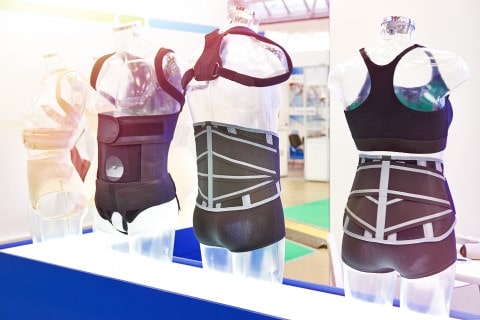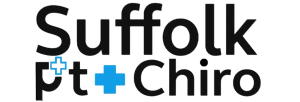Back Brace for Lower Back Pain – Medical Equipment For Injuries
We have the medical equpiment on-site, including a back brace for lower back pain or perhaps other medical equipment you may need for pain and discomfort.

Durable Medical Equipment (DME) includes any item that a patient receives to aid in recovery and treatment. According to Medicare has criteria DME must meet to qualify standards. The Criteria are:
- Durable (can withstand repeated use)
- Used for a medical reason
- Useless to someone who isn’t sick or injured
- Used in your home
- Life expectancy of at least 3 years
Source: medicare.gov
Lumbosacral Orthosis (LSO) – Back Brace For Lower Back Pain
Bracing involves supporting a part of the body which needs support due to an injury or weakness. For example, if a patient has an injured lower back, the doctor may recommend a lumbar brace for support. This would continue until the injured areas heal. Many different types of lumbar supports exist. They depend on the areas injured and degree of injury.
There are braces made for about every part of the body. Also, there are some for shoulders, ankles, etc. Each of them help support an injured or weak area. Moreover, braces are used after surgery for the areas operated on. Finally, it is for support and many times to limit mobility until the part can heal. A back brace can play a significant role in the recovery and management of lower back pain after a car accident injury. Here are some important reasons why a back brace is crucial in such situations:
Support and Stability
Lower back pain after a car accident injury often results from damage to the muscles, ligaments, or spine. A back brace provides support and stability to the affected area, reducing pressure on the injured structures. This helps prevent excessive movement, promoting proper alignment and posture, and allowing the injured tissues to heal without strain.
Back Brace for Lower Back Pain Relief
Back braces can help alleviate pain by providing compression and reducing muscle spasms or excessive movement. The pressure applied by the brace can stimulate sensory receptors, which may help reduce the perception of pain.
Limiting Range of Motion
A back brace can restrict the range of motion of the lower back, preventing excessive bending, twisting, or sudden movements. By limiting these motions, it reduces the risk of further injury or aggravation to the damaged structures and allows the body to heal more effectively.
Promoting Healing
The stability provided by a back brace allows the injured tissues to heal more efficiently. By minimizing movement and reducing stress on the affected area, a back brace can aid in the recovery process and support the body’s natural healing mechanisms.
Psychological Support
Wearing a back brace can provide psychological reassurance and confidence to individuals suffering from lower back pain. It can act as a reminder to maintain proper posture and avoid activities that may exacerbate the pain, helping individuals feel more secure and providing a sense of control over their condition.
Facilitating Rehabilitation
Back braces are often prescribed as part of a comprehensive treatment plan for lower back pain after a car accident injury. They can assist in the early stages of rehabilitation by providing support during physical therapy exercises, allowing individuals to perform the movements more comfortably and safely.
Key to using a back brace for lower back pain
It is important to note that back braces should be used under the guidance of a healthcare professional, as they are not a standalone solution for lower back pain. They should be combined with appropriate care plan, chiropractic, physical therapy, and lifestyle modifications to optimize recovery and achieve long-term results.
Neck Traction Device (Cervical Traction Unit)
A cervical traction device is an important tool in the rehabilitation of spinal discs after a cervical disc injury. Here are several reasons why it is crucial in this process:
Traction of Spinal Discs
A cervical disc injury often involves compression or herniation of the discs in the neck region. A traction device assists in stretching the affected discs by gently stretching the cervical spine. This gentle traction helps to create space between the vertebrae, reducing pressure on the injured discs and promoting the retraction of herniated material. By relieving the compression, it allows the discs to heal and regenerate.
Neck Pain Relief
Cervical traction can alleviate neck pain associated with disc injuries. By creating separation between the vertebrae, it reduces pressure on the nerves, relieving pain and reducing inflammation. The traction device also helps to stretch the muscles and soft tissues around the neck, further promoting pain relief.
Restoring Proper Alignment and Neck Curvature
Certain neck traction devices can help restore proper curvature of the spinal vertebrae. It assists in realigning the neck and reducing any abnormal curvature caused by the disc injury. By restoring proper alignment, it can help alleviate symptoms like neck stiffness and improve overall spinal health. This neck traction device is as known as a cervical curve corrector.
Improving Blood Flow and Nutrient Supply
The gentle stretching provided by a cervical traction device can enhance blood flow to the injured discs. Improved blood circulation brings essential nutrients and oxygen to the damaged areas, facilitating healing and spinal decompression of discs. It also helps in removing metabolic waste products that may accumulate due to the injury.
Promoting Healing and Rehydration
Cervical traction aids in the healing and rehydration of the injured discs. The stretching forces applied by the device can help draw fluid back into the discs, promoting their hydration and improving their shock-absorbing capabilities. This rehydration process aids in the restoration of disc height and functionality.
Facilitating Rehabilitation and Recovery after Injury
A neck traction device is often used as part of a comprehensive rehabilitation program for cervical disc injuries. It can be combined with other treatments such as physical therapy exercises, manual therapy, and pain management techniques to optimize recovery. The device assists in preparing the injured discs for further therapy, making the rehabilitation process more effective and efficient.
Shoe Orthotic Inserts and Back Pain
Firstly, shoe orthotics are a kind of insole that help relieve foot pain and much more. The feet are the foundation of the whole body. Hence, like a building, if the foundation is not strong and level, stress and weakness occur. Next, walls may crack over time and the windows may fall out from the abnormal pressure. If it were the statue of liberty, the torch may fall to the ground after enough years (ie: Leaning Tower of Pisa). Thus, problems in your feet can cause similar issues in your body.
How do orthotic Inserts improve my function
The foundation of the human body needs to be strong, level and stable. If not, every body part above it and every joint above it will stress and can show a problem. Shoe orthotics helps in the treatment of leg pain and discomfort. Also, they help provide a normal foundation for the rest of the body. There are several different types of shoe orthotics. Some are rigid, some are soft and flexible. Your doctor will determine which is best for you. Generally, doctors take an impression of the patient’s foot with either of two methods. One is with a plastic mold which is non-weight bearing.
The second uses a styrofoam mold that the patient steps in to create and impression of the feet. Next, these molds are then sent to a lab where an orthotic device custom for that foot. Patients slip the device into the shoes or sneakers that they wear. Orthotics could help if you have a collapsed arch, bunion, hammertoes, or heel spurs, . Similarly, they also will help fix the biomechanics that may have caused these problems in the first place. The orthotics go inside of your shoes and sneakers. Further, they are usually broken in over several weeks with wear for a few hours each day of increasing intervals.
How can orthotics preserve my body
Another important thing about shoe orthotics is that they create a level foundation. If you have one leg shorter than the other often the doctor will add a heel to the orthotic to make the leg lengths equal. In fact, this provides a situation where you produce equal pressure on the knees, hips, pelvis, and spine. Further, this prevents early degeneration and arthritis from accruing in these areas. If you are having pain and getting adjusted by your chiropractor, you need to address an unlevel foundation. Also, your chiropractic adjustments will never hold in place until this foundation stabilized. Additionally, shoe orthotic inserts are often called spinal pelvic stabilizers.
Chiropractic
EMG Test / Nerve Testing
Range of Motion Testing
Physical Therapy

Spinal Decompression

Orthotics & Bracing

Digital X-Ray

MRI Interpretation
MUA Procedure
Durable Medical Equipment – Back Brace For Lower Back Pain – Disclaimer
The information provided on this page or article is for informational purposes only and should not be considered as medical advice. The content is not intended to diagnose, treat, or recommend a specific course of treatment for any medical condition. It is designed to help users understand various standards of care and medical conditions. No information on this website establishes a doctor-patient relationship, and it should not be relied upon as a substitute for professional medical advice. Always seek the advice of your physician or qualified healthcare provider with any questions you may have regarding a medical condition or treatment.
